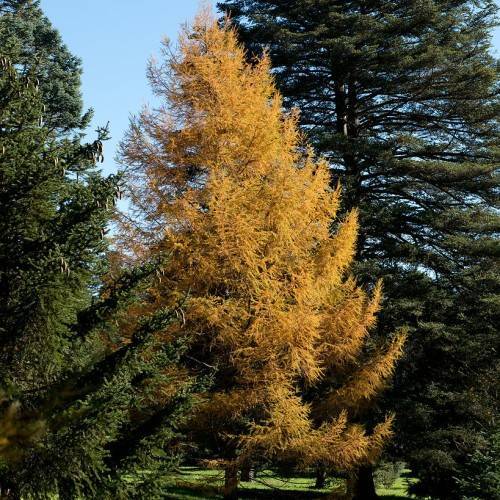
dahurian larch
Larix gmelinii var. olgensis
Cycle:
Perennial
Watering:
Average
Hardiness Zone:
2 - 5
Flowers:
Flowers
Sun:
Full sun
Cones:
Yes
Leaf:
Yes
Growth Rate:
Low
Maintenance:
Low
Drought Tolerant:
Yes
Salt Tolerant:
Yes
watering
The Dahurian larch (Larix gmelinii var. olgensis) needs watering once every week. A generous amount of water should be given, with the focus to keep the soil consistently moist but not soggy. In its first year, the plant requires more frequent watering (2 to 3 times per week, depending on the weather conditions). Once the second year passes, the Dahurian larch should only need watering once a week. In case of hot weather, it should be watered more often or daily if temperatures soar.
sunlight
The Dahurian Larch (Larix gmelinii var. olgensis) grows best in moderately sunny environments, and it requires between 4 and 8 hours of direct sunlight per day. The amount of sunlight needed to ensure optimal health and growth of the plant varies greatly depending on the season and the environment in which the plant is growing. During the spring and summer months, the Dahurian Larch require more direct sunlight than other times of the year. In late spring and early summer, when the days are becoming longer, it is beneficial to give the Dahurian Larch 8 hours or more of direct sunlight each day. During the winter, when the days are shorter, the plant will still need at least 4 hours of sunlight to stay healthy and vibrant. For optimal growing conditions, try to provide your Dahurian Larch with consistent sunlight throughout the year.
pruning
When it comes to pruning Dahurian Larch, it is important to time it correctly. Pruning will depend on the age of the tree and the desired outcome. For younger trees (up to 10 years old), pruning should be done in late winter or early spring before the buds of the tree begin to swell. During this time, selective pruning of dead stems, crowded branches, and inner branches should be performed to help the tree take on its desired shape. For mature trees (older than 10 years), pruning should be done in early spring before the buds begin to swell and the tree begins to leaf out. Selective pruning of dead wood and crossing branches should be done in order to help rejuvenate the tree and stimulate new growth. It is also important to prune the Dahurian Larch tree regularly in order to maintain its health and shape.
